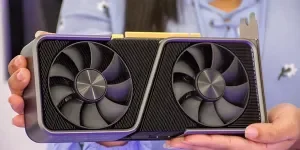Computer touchpads are essential tools that enable easy navigation and effective control in personal and business environments. Designed to either replace or augment conventional mouse, touchpads provide simplified functionality, allowing multi-touch gestures, precision tapping, and more flawless user experiences.
From advanced gesture-based solutions to capacitive and resistive variants, these touchpads satisfy various needs, from high-precision activities to ordinary surfing, using their several forms. Choosing the correct model guarantees improved output, more seamless processes, ergonomic advantages, and compatibility with the newest running systems and software in 2025.
Table of Contents
1. Key Types of Computer Touchpads and Their Uses
2. Current Market Overview for Computer Touchpads
3. Essential Factors to Consider When Choosing a Computer Touchpad
4. Leading Models of 2025: Features and Highlights
5. Conclusion
Key types of computer touchpads and their uses

Capacitive touchpads
Capacitive touchpads that sense the inherent conductivity of a finger or suitable stylus register input through electrostatic fields. These touchpads, well-known for their great sensitivity, precisely record light touches, making them perfect for quick reactions and tasks driven by accuracy. They also encourage other movements that improve user involvement in business apps, such as pinching or swiping. Capacitive touchpads can be less sensitive with gloves or non-conductive materials. Hence, they are especially suited when direct finger contact is practical.
Resistive touchpads
Resistive touchpads work through pressure-based input. They are built with two flexible layers and fit any pointing device, such as a gloved hand or stylus. Since durability is prioritized in industrial or outdoor environments, this adaptability is helpful as these touchpads effectively manage dust and moisture. Resistive touchpads offer a reasonably priced, flexible solution where durability and adaptability are crucial, even though they lack the sensitivity and gesture capabilities of capacitive ones.
Multi-touch and gesture-enabled touchpads
Multi-touch touchpads, typically advanced versions of capacitive models, allow for multiple simultaneous touchpoints, enabling complex gestures like pinch-to-zoom and three-finger swipes. This functionality offers quick, intuitive control, making it valuable for professionals who manage extensive data or use design applications. Often integrated with operating systems that support gesture control, these touchpads enhance workflow efficiency and ergonomic convenience, allowing for customizable shortcuts and streamlined navigation in productivity-focused environments.
Current market overview for computer touchpads

Market growth and trends in 2024
With a projected compound annual growth rate (CAGR) of 12.5% from 2024 to 2031, the computer touchpad industry is seeing fast expansion. The rising popularity of touch-based devices in many fields, including consumer electronics, automotive, and healthcare, drives this demand. Reflecting their growing importance in technology, touchpads—which show up in tablets, smart appliances, and in-car systems—are now indispensable parts beyond conventional computers. Leading the market are North America and Asia-Pacific; North America is estimated to reach over USD 152.48 million by 2024, while Asia-Pacific has the greatest regional growth rate at 14.5%. Based on findings from Emergen Research, Europe also boasts a sizable market share thanks to its great acceptance of sophisticated touch-activated gadgets.
Key innovations shaping the market
The touchpad industry is changing with various sophisticated capabilities that improve user efficiency and experience. Touchpads include haptic feedback to provide tactile sensations, enhancing the accuracy and responsiveness of touch-based interactions. Additionally becoming popular are gesture-based touchpads with customized multi-touch gestures, which let users create shortcuts for maximum everyday operations’ efficiency. Eco-friendly materials are also starting to take the stage as producers answer environmental issues that appeal to sustainability-conscious consumers.
Essential factors to consider when choosing a computer touchpad

Compatibility with operating systems and devices
Choosing a touchpad depends much on compatibility with the operating system (OS) since different OSs allow different touch motions and features. Notable for supporting Windows and Mac OS, Touchpads such as the Seenda trackpad and Jelly Comb type are flexible choices for mixed-use settings. Designed especially for macOS, some touchpads—like the Apple Magic Trackpad—have features like Force Touch, which isn’t supported by most Windows-compatible choices. Whether for multitasking or navigation, ensuring compatibility with the target OS lets users maximize gesture capabilities.
Sensitivity, responsiveness, and customization options
Sensitivity and responsiveness are key touchpad qualities, affecting how accurately they respond to finger movement. High-end models like the Microsoft Arc Mouse and the Keymecher Mano Trackpad provide customizable gesture controls and enhanced responsiveness, allowing users to set personalized shortcuts and manage cursor speed. These features contribute to smoother interactions, especially for tasks involving precise movements, such as design work. Multi-touch support, available on many touchpads, also enables efficient gesture-based control, making workflows faster and more seamless.
Durability and build quality

Touchpad durability affects both its lifetime and user experience. Particularly notable for their strong construction and improved wear resistance are models like the Perixx Peripad, which has a tough design, and a metal-based Seenda touchpad. High-quality materials—such as aluminum or tempered glass—that offer strength and a professional look are usually recommended for daily usage. Durability also usually corresponds with the warranty given, with many brands offering guarantees of up to one year, which gives consumers confidence in their investment for hard or extended use.
Price range and value for quality
Features and build quality determine Touchpad pricing, which varies greatly. While premium choices, such as the Apple Magic Trackpad, come at a higher cost but offer sophisticated capabilities and superior build quality, basic models, including the Perixx Peripad, offer necessary functionalities at reasonable costs. Mid-range versions such as the Dell TP713 or Jelly Comb give buyers who balance price and performance good value by including sturdy construction and multi-touch capability without straying from the top-tier pricing range. Selecting a touchpad fit for certain requirements and budget guarantees a fair investment in quality and utility.
Leading models of 2025: features and highlights
High-performance models for professionals
Professionals’ high-performance touchpads include sophisticated capabilities such as configurable gesture controls, multi-touch capability, and increased responsiveness. Perfect for design and content creation, many premium alternatives provide a big touch surface that allows pressure-sensitive gestures, therefore enabling exact navigation and control in detailed activities. These devices also frequently have ergonomic features to facilitate long use and sophisticated networking choices to allow smooth integration with productivity tools.
Best mid-range touchpads

Mid-range touchpads combine reasonably priced essential capabilities. Usually providing consistent multi-touch capabilities, these devices make movements possible, including scrolling, swipes, and zooming. Mid-range touchpads have big, smooth surfaces that increase workflow productivity while stressing robustness with metal or strong plastic bottoms. Often compatible with Windows and macOS, these touchpads provide consumers with flexible performance without premium cost a balanced alternative.
Budget-friendly options
Budget touchpads provide basic functions, including two-finger scrolling, basic gesture capability, and simple plug-and-play configuration in regular usage. These touchpads are useful for daily chores, including browsing and basic office work, even if they lack sophisticated customizing and superior building materials. Small, lightweight, and cheap devices often give the necessary touch capabilities for ordinary work situations while stressing price.
Conclusion
Maximizing output and user happiness depends on choosing a touchpad that fits certain needs and professional standards. Important considerations, including compatibility, responsiveness, durability, and price range, guarantee that the touchpad satisfies long-term usage criteria and current needs. While mid-range and budget models satisfy different degrees of functionality and financial restraints, high-performance models provide advanced features perfect for demanding activities. Selecting a touchpad that mixes quality and necessary functionality offers useful, quick, and successful digital interactions in different workplaces.



